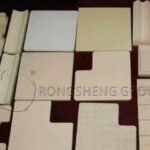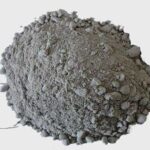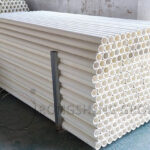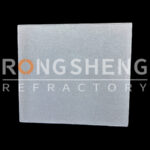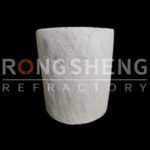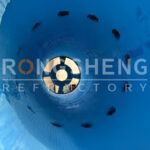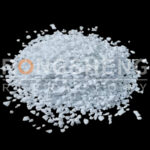How to Improve the Performance Parameters of Zirconium Corundum AZS Bricks?
AZS Bricks, abbreviated as zirconia, are primarily composed of alumina and zirconium oxide, with small amounts of other additives. Their high alumina content and the addition of zirconium oxide impart unique properties. For example, a typical zirconia brick may contain approximately 70% alumina and 30% zirconium oxide. It may also contain trace amounts of additives such as borax and silica sol to improve sintering performance.
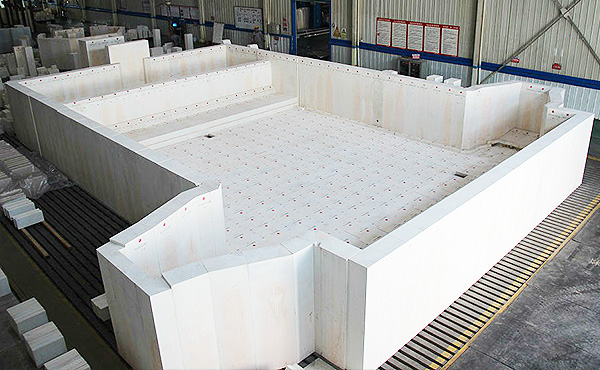
Zirconium-aluminum bricks are primarily used in glass industry tank furnaces, including key areas such as the tank walls, vents, superstructures, hanging walls, and breast walls. In glass furnaces, zirconia-aluminum bricks can withstand temperatures exceeding 1600°C and the corrosive effects of molten glass, ensuring proper furnace operation and high-quality glass production. They are also used in high-temperature industries such as steel smelting furnaces, cement rotary kilns, and non-ferrous metal smelting.
Improving the Performance Parameters of Zirconia-Corundum Bricks
To maximize the performance parameters of Zirconia-Corundum bricks, various performance-enhancing additives are added during production. Nanomaterials exhibit unique size and surface effects, and the introduction of nanoscale additives into Zirconia-Corundum bricks can improve their performance. For example, the addition of nanoparticles such as nanoalumina and nanozirconia can form finer dispersions within the brick, hindering crack propagation and increasing the brick’s toughness and strength. Furthermore, these nanoadditives can synergize with the original components of Zirconia-Corundum bricks to enhance their thermal shock resistance and erosion resistance.
However, due to its high specific surface area and surface energy, nanoalumina is prone to agglomeration. If dispersion issues are not effectively addressed during production, agglomerated nanoalumina particles can form localized defects within the Zirconia-Corundum brick, reducing its overall performance. For example, agglomerates can become stress concentration points, making cracks more likely to form during use, impacting the brick’s strength and durability.
By modifying the nano-alumina, a carbon nanotube core-shell structure is grown in situ on the surface. This core-shell structure prevents direct contact between nano-alumina particles, thereby reducing the possibility of nano-alumina agglomeration. This allows the nano-alumina to be evenly distributed within the corundum monolithic refractory brick, forming a finer dispersed phase within the brick, hindering crack propagation and improving the brick’s toughness and strength.
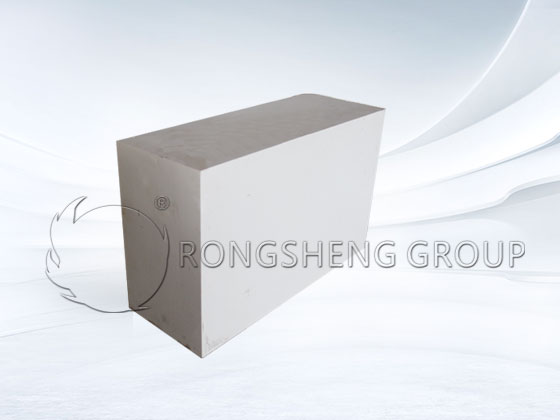
The technical solution is as follows:
Materials: 55-65 parts alumina powder, 25-35 parts zircon sand, 1-5 parts modified nano-alumina powder, 2-6 parts binder, 1-2 parts chromium oxide, 1-3 parts yttrium oxide, and 1-4 parts flux.
The alumina powder has a particle size of 1-1.5 mm and a purity >99%.
The zircon sand contains 65% zirconium oxide and 34% silicon dioxide, with a particle size of 0.05-2 mm.
The modified nano-alumina powder is nano-alumina modified with in-situ carbon nanotubes. A carbon nanotube core-shell structure is grown on the surface of the modified nano-alumina.
The binder is silica sol. The silica content is approximately 40%, the iron content is <0.01%, the sodium oxide content is <0.5%, the viscosity is 10-20 mPa·s, and the particle size is 20-70 nm.
The flux is borax with a purity of >95%, an iron content of ≤0.005%, and a particle size of 0.15mm.
The production steps are as follows:
Ingredients: Add alumina powder, zircon sand, modified nano-alumina powder, binder, chromium oxide, yttrium oxide, and flux to a mixer in the correct proportions.
Mixing: Stir the ingredients in the mixer at a speed of 120-180 rpm for 90-120 minutes to ensure thorough mixing.
Molding: The mixed ingredients are placed into a mold and molded using a friction press or hydraulic press. The molding pressure is 150-220 MPa, and the holding time is 30-90 seconds, until the bricks reach the desired shape.
Drying: The molded bricks are placed in a drying oven along with the mold to dry and remove moisture. The drying temperature is 110-140°C, and the drying time is 24-72 hours.
Sintering: The dried bricks are placed in an insulated sand box along with the mold and then sintered in a high-temperature kiln at a temperature of 1650-1800°C. The heating rate is 3-5°C/min, and the holding time is 4-8 hours.
Annealing: After the sintered zirconium-alumina refractory bricks and the mold are removed from the insulating flask, the mold is removed. The zirconium-alumina refractory bricks are placed back into the insulating flask for annealing for 24-48 hours. The cooling rate is 2-4°C/min.
Advantages: Nanomaterial modification technology and optimized production processes not only address the problem of nanoparticle agglomeration but also significantly improve the overall performance of the bricks, making them more suitable for high-temperature and highly corrosive working environments. The resulting zirconium-alumina refractory bricks offer high quality, a high forming rate, stable internal stress distribution, and resistance to high temperatures and corrosion.
Differences in Application Between Fused AZS and Fused Corundum Bricks
In float glass furnace design, the optimal combination is determined based on glass quality requirements, furnace service life, refractory properties, and cost. Different refractory types are used in different areas. Parts in contact with the molten glass, such as the tank walls and bottom, have a significant impact on furnace life and glass quality, and therefore require more stringent selection criteria.
With improvements in refractory quality and performance, and increasing demands for furnace lifecycles, fused AZS bricks are currently used for both the melting tank walls and bottom, as well as the neck tank walls and bottom. This is primarily to address chemical erosion caused by batch reactions and erosion from high-temperature molten glass. Fused AZS offers superior high-temperature erosion resistance compared to other refractory materials.
33# oxidation-process fused zirconia-corundum bricks can be used for the cooling tank walls and bottom, but high-quality float glass production lines typically use α-β fused corundum bricks, primarily for glass quality considerations. α-β fused corundum bricks have low porosity and exhibit excellent corrosion resistance at the 1350°C operating temperature of the cooling section, without any glassy phase precipitation. However, fused AZS bricks, due to their high content of SiO2 and alkaline oxides, are prone to glassy phase precipitation, and this volume change can lead to the formation of bubbles. Furthermore, after the zirconium corundum is dissolved by the molten glass, the corrosion-resistant ZrO2 material remains, forming microscopic dendrites. Discharge at the tip triggers an electrochemical reaction, ionizing and reducing the gas components in the glass to form bubbles. Therefore, based on glass quality requirements, kiln runner designs generally use α-β fused corundum bricks for the cooling section walls and floor paving.
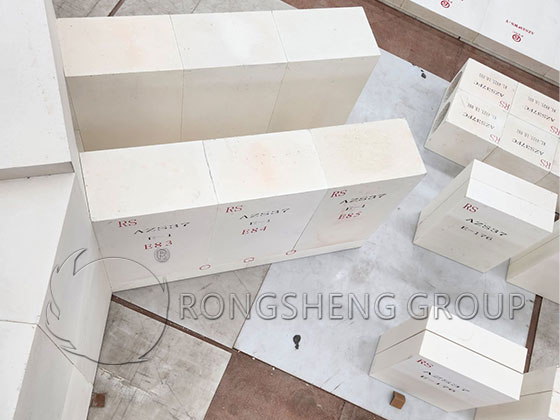
Applications of Fused AZS Bricks and Fused Corundum Bricks
Fused Zirconia Corundum
Grades include: AZS-33 (33% ZrO₂ content), AZS-36 (36% ZrO₂ content), and AZS-41 (41% ZrO₂ content).
The erosion resistance of fused zirconium corundum increases with increasing ZrO₂ content. 33# fused AZS bricks are suitable for the melting pool walls and the breast wall of the material processing area. Corners of the pool walls are more susceptible to erosion by the molten glass, so 36# fused AZS bricks or 41# AZS bricks with higher ZrO₂ content are the best choices.
The production process for fused zirconium corundum is divided into reduction and oxidation methods. Currently, the oxidation method is the primary shrinkage-free casting process. The oxidation melting method eliminates contamination caused by graphite electrodes in the melt, has a low carbon content, and can reduce the bubble content in the glass.
α-β Fused Corundum Bricks
Al2O3 content >98%. Made from high-purity alumina with a small amount of soda ash, it is melted at 2000-2200°C and produced using a shrinkage-free casting method.
The thermal expansion coefficient of fused corundum is 8.6, placing it in the lower-to-medium range for thermal shock resistance. Fused corundum bricks exhibit slightly poor high-temperature corrosion resistance, with resistance to molten glass decreasing rapidly at temperatures above 1600°C. However, at operating temperatures of 1350°C and below, they exhibit strong corrosion resistance and virtually no contamination of the molten glass. They are ideal materials for the cooling tank walls and floors of glass melting furnaces, as well as for float glass launders.
